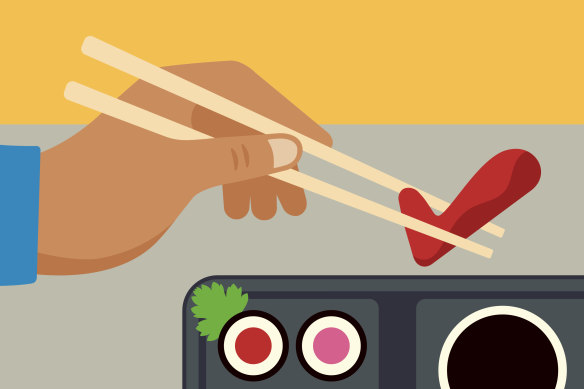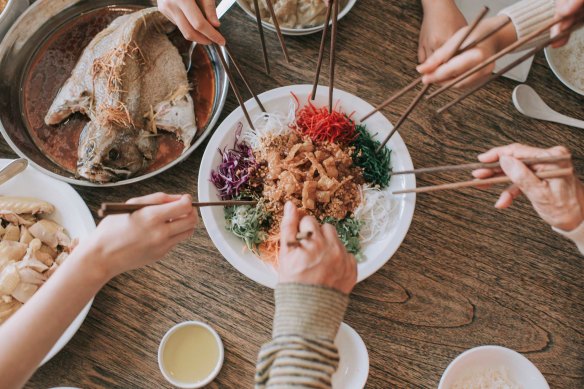Don’t ‘dig a grave’: The unspoken rules of chopsticks etiquette
So you think you’ve mastered the art of chopsticks? You mightn’t know that there’s more to chopstick etiquette than the ability to pick up food.
Most Australians are practised at manipulating chopsticks. If you aren’t, get practice before heading off to eastern or south-east Asia, because your familiarity with them – even if clumsy – will be greeted with approval, and as a sign of respect.

Chop, chop.Credit: Greg Straight
What you do with your chopsticks is more important than your expertise in using them, however. Don’t pick them up until your elders (or work superiors) have done so, signalling the start of the meal.
As with Western cutlery, it’s considered ill-mannered to point with chopsticks, play with them, or continue holding them while not eating. You shouldn’t lick them or insert them too far into your mouth; ideally, barely beyond your lips.
You’ll see many ethnic Chinese people, but never Koreans or Japanese, lift their bowls to their mouths and use their chopsticks to scoop in food. That’s fine at home or at street stalls, but increasingly considered low class in politer settings such as restaurants.
In Chinese societies, diners will often use their own chopsticks to remove food from shared dishes. Don’t rummage around for the choicest morsels; the Chinese call this “digging the grave”. Don’t eat directly from shared plates either: transfer the food into your own bowl first, then pick it up again to eat it.
The COVID-19 pandemic has reduced chopstick use in shared dishes and in any case, in polite society, this isn’t considered the done thing. Serving chopsticks or other utensils should be provided. If not, ask for them.

Don’t rummage around for the choicest morsels; the Chinese call this “digging the grave”.Credit: iStock
The Japanese never use their own chopsticks in communal food. The old-fashioned way is to use the reverse end of your chopsticks, but these days serving chopsticks are always available.
Chopsticks are loaded with symbolism that also influences what should be done with them. Chopsticks thrust into a bowl of rice are a feature of funeral offerings since they recall incense sticks in temples, so don’t leave your chopsticks sticking out of your bowl when not eating, which is considered an ill omen.
Chopsticks should be laid horizontally across the bowl’s rim or set down on a chopstick rest. The chopsticks should lie side by side. An X-shape is bad luck in Japan, a V-shape just as bad in Vietnam.
Koreans eat with chopsticks as well as a long-handled metal spoon. Never lay your chopsticks to the left of the spoon, which is another funeral ritual.
Chopsticks, widely used in Vietnam and Cambodia, are only for eating noodles or Chinese food in Thailand, the Philippines, Indonesia and among Malaysia’s Malay population. You might cause offence if you ask for chopsticks in nations sensitive to Chinese cultural influences.
Chopstick rules, like so much other etiquette, have become less rigid, with media articles in Asia bemoaning the decline of the younger generation’s proper chopstick use. Don’t worry too much but, if you do the right thing, your hosts will be impressed.
Sign up for the Traveller newsletter
The latest travel news, tips and inspiration delivered to your inbox. Sign up now.